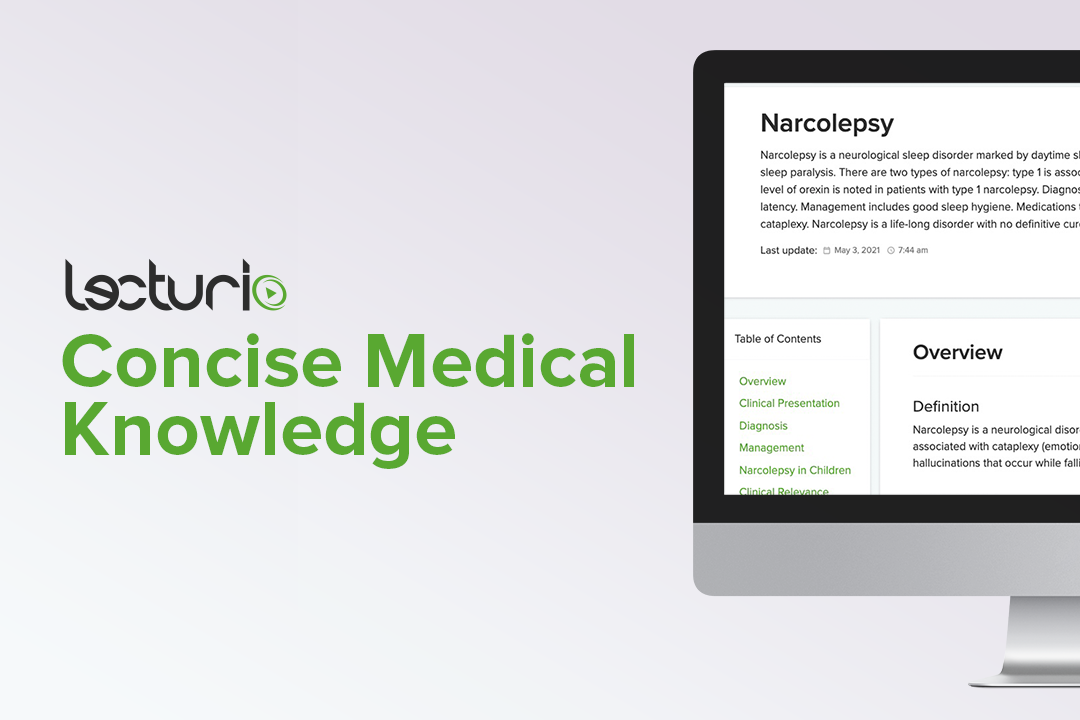Playlist
Show Playlist
Hide Playlist
Narcolepsy: Diagnosis
-
Slides Sleep Disorders Narcolepsy.pdf
-
Download Lecture Overview
00:00 How do we diagnose narcolepsy? Well, this is really a clinical diagnosis supported by polysomnography and other diagnostic testing. Polysomnography and narcolepsy demonstrates spontaneous awakening, reduced sleep efficiency and often increased light non-REM sleep. REM sleep often begins within 15 minutes so we see early onset REM sleep in these patients. Patients have a deficiency of REM sleep and so they push REM sleep earlier into the night to try and recover REM sleep that has been lost but the diagnostic modality of choice for diagnosing narcolepsy is the multiple sleep latency test and this is really a test I want you to remember and associate with the diagnosis of narcolepsy. To make a diagnosis of narcolepsy, we want to look at the findings that we see on the MSLT. The MSLT is done the morning after a sleep study or polysomnogram. The patient is placed in sleep- inducing environments and allow to fall asleep spontaneously multiple times. Each nap session continues for about 15 minutes after sleep onset to detect when REM sleep begins after the onset of a nap. Typically, REM sleep begins many minutes into a nap and in narcolepsy we see early onset REM. Each nap each sleep episode is repeated at 2-hour intervals until the patient has had 4-5 opportunities to nap. 01:37 And patients with narcolepsy take less than 8 minutes to fall asleep and have early onset REM during those naps. In terms of laboratory investigations, we can also do CSF studies and gene testing to evaluate particularly narcolepsy type 1. In the CSF, we can measure orexin levels and that's that hormone released by the hypothalamus that is reduced and deficient in patients with narcolepsy type 1. We see low levels that are suggestive of narcolepsy type 1 and this is typically done when sleep testing cannot be performed. CSF analysis is not required to establish a diagnosis of narcolepsy type 1, but when performed and demonstrating low orexin levels is highly suggestive of this condition. Genetic testing for that DQB1 gene and abnormalities polymorphisms in that gene can also be performed. Other test may be supportive of this diagnosis, but again the MSLT is how we diagnose narcolepsy. Actigraphy or the use of a movement sensor worn on the patient's non-dominant wrist can be helpful to evaluate sleep time and sleep efficiency and we see reduced sleep efficiency in narcolepsy. So there are a number of diagnostic criteria to establish a diagnosis of narcolepsy type 1. The first is daily periods of irrepressible need to sleep, 3 times per week for more than 3 months. So for a persistent period of time patients have this frequent need to sleep during the day. 03:11 We also need to establish 1 or both of the following; low levels of orexin in the cerebrospinal fluid or cataplexy and an MSLT of less than 8 minutes demonstrating that early onset of sleep in the MSLT. For narcolepsy type 2, there are a number of criteria that are used to establish this diagnosis, daily periods of irrepressible need to sleep, a mean sleep latency of less than 8 minutes. Again, that MSLT finding. Here are typically cataplexy is absent. There are normal levels of orexin in the cerebrospinal fluid. We don't need that to establish a diagnosis of narcolepsy type 2, but the presence would be suggestive of this type of narcolepsy. 03:55 And the findings should not be better explained by other causes like insufficient sleep, obstructive sleep apnea which is ruled out on a polysomnogram, delayed sleep phase disorder, or effects of medications, illicit substances or withdrawal from a medication.
About the Lecture
The lecture Narcolepsy: Diagnosis by Roy Strowd, MD is from the course Sleep Disorders.
Included Quiz Questions
What might a clinician see on polysomnography in a patient with narcolepsy?
- REM sleep within 15 minutes (versus 80–100 minutes in healthy individuals)
- Increased sleep latency (> 1 hour)
- Increased sleep efficiency
- Decreased light non-REM sleep
- Spike-and-wave waveform pattern
What is the average sleep latency period in a healthy patient?
- 10–15 minutes
- 30–40 minutes
- > 1 hour
- < 5 minutes
- < 8 minutes
What might one find in the CSF of a patient with narcolepsy?
- Low levels of orexin
- Increased oligoclonal bands
- Increased levels of 14-3-3 protein
- Decreased levels of serotonin
- Increased levels of orexin
Customer reviews
5,0 of 5 stars
| 5 Stars |
|
5 |
| 4 Stars |
|
0 |
| 3 Stars |
|
0 |
| 2 Stars |
|
0 |
| 1 Star |
|
0 |




